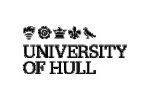[:vi]Tiếp nối chuyến khảo sát thực địa tại Khu Dự trữ Sinh quyển Thế giới Miền Tây Nghệ An cuối tháng 9 vừa qua, từ ngày 16 đến 22 tháng 10 năm 2016, Trung tâm Nghiên cứu Tài nguyên và Môi trường, Đại học Quốc gia Hà Nội tổ chức chuyến nghiên cứu thực địa tại Khu Dự trữ Sinh quyển Đồng Nai, trong khuôn khổ đề tài độc lập cấp Nhà nước “Nghiên cứu xây dựng bộ tiêu chí và quy trình giám sát, đánh giá hiệu quả quản lý các khu dự trữ sinh quyển của Việt Nam”, do Bộ Khoa học và Công nghệ quản lý và Trung tâm Nghiên cứu Tài nguyên và Môi trường chủ trì thực hiện. Mục đích của chuyến công tác này là xem xét hiện trạng quản lý liên quan tới các hoạt động bảo tồn và phát triển của Khu Dự trữ Sinh quyển Đồng Nai.
Làm việc với Ban Quản lý KDTSQ Đồng Nai và UBND huyện Đồng Phú (Bình Phước)
Tham gia chuyến khảo sát có các nhà khoa học về tự nhiên, xã hội và chính sách, đến từ các cơ quan, viện nghiên cứu và các trường đại học như Trung tâm Nghiên cứu Tài nguyên và Môi trường, Viện Sinh thái và Tài nguyên Sinh vật, Viện Môi trường và Phát triển Bền vững, Viện Dân tộc học, Học viện Nông nghiệp Hà Nội, trường Đại học Khoa học Tự nhiên và Văn phòng Con người và Sinh quyển (MAB) Việt Nam.
Trong thời gian công tác, đoàn đã làm việc với Ban Quản lý KDTSQ Đồng Nai, Ban Quản lý Khu Bảo tồn Thiên nhiên – Văn hóa Đồng Nai tại xã Mã Đà, huyện Vĩnh Cửu, tỉnh Đồng Nai; khảo sát một số điểm như Di tích Căn cứ Khu ủy Miền Đông Nam Bộ và Trung tâm Sinh thái – Văn hóa – Lịch sử Chiến khu D. Đoàn cũng làm việc với lãnh đạo UBND huyện Vĩnh Cửu; khảo sát hiện trạng tự nhiên, kinh tế-xã hội tại thủy điện Trị An trên sông Đồng Nai; làm việc với lãnh đạo Ban Quản lý Vườn Quốc gia Cát Tiên và lãnh đạo UBND huyện Tân Phú cùng các cán bộ chuyên môn. Ngoài ra, đoàn còn khảo sát một số điểm bảo tồn và phát triển du lịch và nghiên cứu ở vùng lõi và vùng đệm của VQG Cát Tiên, đặc biệt là mô hình “nhà dài” được xây dựng theo phong cách văn hóa của dân tộc bản Mạ, xã Tà Lài, huyện Tân Phú (tại vùng đệm của VQG) – một mô hình kết hợp thành công giữa doanh nghiệp với cộng đồng địa phương trong phát triển du lịch. Đoàn cũng đến khảo sát khu vực Bàu Sấu, thuộc vùng lõi VQG Cát Tiên – là một trong số rất ít VQG/KBTTN mà các du khách và các nhà nghiên cứu khoa học có thể tận mắt nhìn thấy những con thú lớn như hươu, nai, bò tót và cá sấu… Kết thúc chuyến khảo sát là các buổi làm việc của đoàn với lãnh đạo UBND huyện Cát Tiên, tỉnh Lâm Đồng và UBND huyện Đồng Phú, tỉnh Bình Phước.
Khảo sát các địa điểm du lịch ở vùng đệm của KDTSQ
Trong chuyến làm việc lần này, các chuyên gia tập trung chủ yếu vào những nội dung sau: (i) chức năng, nhiệm vụ, nguồn lực và cơ cấu tổ chức cũng như các vấn đề đặt ra của các địa phương; (ii) vai trò và mức độ tham gia của các tổ chức và chính quyền địa phương vào công tác lập kế hoạch, thực hiện các nhiệm vụ và giám sát, đánh giá việc quản lý hiệu quả các hoạt động của Khu Dự trữ Sinh quyển Đồng Nai; (iii) các khó khăn, thách thức và đề xuất các giải pháp vượt qua các khó khăn để thực hiện đúng các nhiệm vụ của KDTSQ.
Được sự đón tiếp nhiệt tình và chu đáo của các cơ quan và chính quyền địa phương, đoàn đã thu thập được đầy đủ các thông tin theo yêu cầu đặt ra của đề tài. Ngoài ra, các chuyên gia của đoàn còn có những thảo luận và trao đổi, kèm theo những khuyến nghị cho các cơ quan và chính quyền địa phương để thực hiện tốt hơn các nhiệm vụ, phát huy các thế mạnh của địa phương.
Khảo sát địa điểm du lịch và nghiên cứu khoa học tại Vùng lõi của VQG Cát Tiên
Các kết quả thu được trong chuyến thực địa tại Khu Dự trữ Sinh quyển Đồng Nai lần này cùng với những kết quả của những chuyến thực địa trước đó là một trong những cơ sở quan trọng giúp cho đề tài hoàn thành được nhiệm vụ chính là xây dựng bộ tiêu chí và quy trình giám sát, đánh giá hiệu quả quản lý các khu dự trữ sinh quyển của Việt Nam, góp phần làm cho công tác quản lý các khu dự trữ sinh quyển ngày càng có hiệu quả, phục vụ tốt cho công tác bảo tồn và phát triển bền vững ở Việt Nam.[:en]Following the field survey at Western Nghe Biosphere Reserve, from the 16th of October to the 22nd of October, 2016, Centre for Natural Resources and Environmental Studies (CRES), VNU conducted a fieldtrip to Đồng Nai Biosphere Reserve that is part of the nationally independent research project: “Developing a set of criteria and process of monitoring and evaluation of management effectiveness of biosphere reserves in Viet Nam”, managed by Ministry of Science and Technology and implemented by CRES. The aim of this fieldtrip is to review the current state of management related to conservation and development activities at the Dong Nai Biosphere Reserve
Working with the Board of Management of Dong Nai Biosphere Reserve & People’s Committee of Đồng Phú District (Bình Phước Province)
Joining this trip has various scientists having expertise in natural, social researching and policy analyzing from many research institutes and universities such as: Centre for Natural Resources and Environmental Studies (CRES), Institute of Ecology and Biological Resources (IEBR), Vietnam Environment & Sustainable Development Institute (VESDI), Institute of Anthropology, Hanoi University of Science, Hanoi University of Agriculture, and Vietnam MAB National Committee.
During this trip, the research group has worked with Dong Nai Biosphere Reserve’s and Dong Nai Culture and Nature Reserve’s Board of Management at Ma Da Commune, Vinh Cuu District, Dong Nai province; survey some locations such as: Headquarters for Eastern Region Party Committee, The Central Committee for South Vietnam relic and Center of Ecology- Culture- History of War Zone D. The research group also worked with leaders from People’s Committee of Vinh Cuu & Tan Phu districts, Board of Management of Cat Tien National Park; survey natural and socioeconomic status of Tri An hydroelectric in Dong Nai River. Besides, the group also examine a number of conservation, tourism development and research destinations in the buffer and core zones of Cat Tien National Park, especially, the “nhà dài” model which is built under cultural customs of Ma ethnic group, Ta Lai commune, Tan Phu district (buffer zone of national park) – a model that combines business accessing and local communities in tourism development. The research group surveyed Bau Sau area as well, the core area of Cat Tien National Park which is one of the few National Park/ Natural Reserve where tourists and researchers could visually see large animals such as deer, gaur and crocodiles… At the end of this trip, there were meetings between our research group and leaders from People’s Committee of Cat Tien district, Lam Dong Province and Dong Phu district, Binh Phuoc Province.
Examine tourist sites in buffer zone of the Biosphere Reserve
In this trip, the group’s experts focused primarily on the following information including: (i) functions, tasks, resources and organizational structure as well as raising issues of the local government agencies; (ii) roles and levels of participation of the organizations and local government in planning, tasks implementation and monitoring, and management efficiency evaluation of Biosphere Reserve of Western Nghe An; (iii) difficulties, challenges and proposed solutions for overcoming confronting duties of the Biosphere Reserve.
The research group has received a very enthusiastic reception of the local government agencies and satisfactorily gathered enough essential information. Besides, experts from the research groups has exchanged frankly and given recommendations to local agencies and authorities for better implementation of missions and promoting the strengths of local area in social-economic development, community based tourism and ecotourism, orientation for sustainable development and conservation of natural resources.
Examine tourist destinations and scientific research areas in core area of Cat Tien National Park
The results, obtained from the fieldwork at Dong Nai Biosphere Reserve and other fieldtrips at previous biosphere reserves, are going to help the project to fulfill its main mission – “building criteria and process building of monitoring and evaluation of management effectiveness of biosphere reserves across Viet Nam”, that contribute to the better management of the biosphere reserves and support effectively in conservative activities and sustainable development of Viet Nam.[:]
























